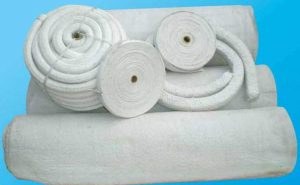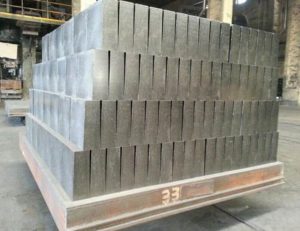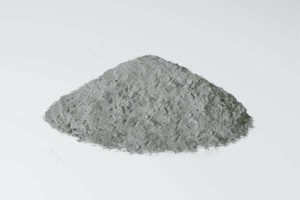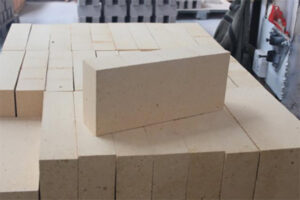Refractory materials are divided into two categories: fired refractories and non-fired refractories. The composition of raw materials, the principle of preparation, the use of binding agents, and admixtures of non-fired bricks are the same as those of indefinite refractories, and they are non-fired or lightly fired products. Dlatego, not burned brick also belongs to the range of indefinite refractory materials.
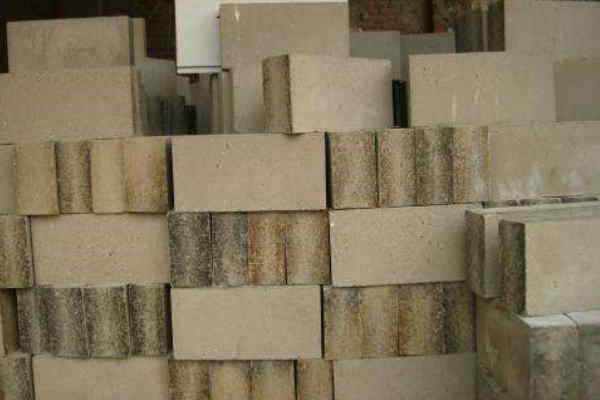
1. The Development Of Non-Fired Refractories
Although the patent of amorphous refractories was reported as early as 1925, the larger development is in the 1950s, the 1970s is a period of vigorous development.
Since the 1970s, the total production of refractories in Japan has been declining year by year, yet the annual production of amorphous refractories has maintained a momentum of nearly 900,000 mnóstwo. By 1985, the proportion of Japan’s production of indefinite refractories had reached 43.5%, becoming one of the countries with the rapid development of indefinite refractories.
Not-burned refractory firebrick has a long history, in the early 20th century abroad has long been not burned magnesium bricks (also known as chemically bonded bricks) Aplikacje. Do not burn phosphate bonded high alumina brick has also been widely used.
China’s early 50s has not burned clay Shi brick was introduced. In the 50s late appeared in succession phosphate bonded, water glass bonded, sulfate bonded, chloride bonded, and cement bonded not burned brick.
In the late 60s and early 70s with the development of refractory concrete and irregular refractory materials, the production volume gradually expanded.
In the mid-1980s, the research and production of unfired bricks made greater progress. In addition to the original binding agent classification of non-fired bricks, there are various types of non-fired refractory bricks modified by adding substances. Such as non-fired magnesium-chromium brick, non-fired aluminum-magnesium brick, non-fired aluminum-magnesium carbon brick, Al2O3-SiC-C brick, and MgO-SiC-C brick.
Not-burned refractory brick has become a new species of refractory materials in recent years, and the rapid development of its research and production, and application status should be given attention.
Not-burned refractory brick classification can be carried out in three ways according to the binding agent, raw materials, i dodatki.
Classification by binding agent is phosphate, water glass, sulfate, chloride, cement, and carbon bonding agent (such as resin, asphalt, itp.).
The raw material is divided into aluminosilicate, krzemionka, magnesium, itp. Almost all refractory raw materials can be made into non-fired bricks.
In recent years, the discovery of additives can greatly improve the performance of non-fired bricks, and the emergence of non-fired bricks is named after additives.
By definition, not burned carbon products such as magnesium carbon, aluminum carbon bricks, and tar combined are not burned refractory brick categories.
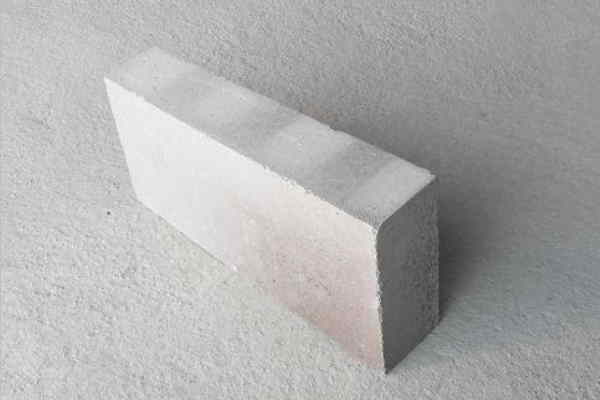
2. The Characteristics Of Non-Fired Refractory Materials
Not burned refractory brick is not fired and can be used directly with refractory materials, it has the advantages of energy saving, dobra stabilność na szok termiczny, easy process, itp., and can replace fired refractory products in a wide range of fields.
Unfired refractory bricks have many characteristics that are different from fired refractory products in the process.
Mainly reflected in the following aspects.
(1) Requires Good Calcination Of Raw Materials.
As not burned refractory bricks without a sintering process, drying directly into use, so, must be used to calcine good raw materials to ensure that the use of high temperature does not bring about large volume changes due to raw material sintering.
Na przykład, for high alumina not burned brick, when using Ⅰ grade high alumina bauxite clinker, the water absorption of clinker must be less than 5%, and when using special grade alumni clinker, its water absorption should be less than 3%.
(2) There Must Be A Reasonable Particle Ratio And Apply High Forming Pressure.
Since there is no densification in the firing process, the densification of unfired bricks must be completed in the forming process. This requires that the non-fired refractory brick must have a very reasonable particle ratio and particle shape.
Ogólnie, it should be required to have a flaky or angular particle shape. Often according to the particle 1. literature review 10 rubbish: fine powder = 7:3 Lub 75:25 ratio.
Requires fineness of less than 0.088mm fine powder more than 90%. Również, require high pressure generally need to use more than 630t friction brick press, and the number of blows should be more than 6 czasy.
(3) Choose The Appropriate Binding Agent.
The binding agent must make not burn brick has good cold strength and can prevent dampness while hoping not to reduce the high-temperature performance of not burn brick. As a binding agent often can not meet the requirements, at present, composite binding agent research has made a lot of progress.
(4) The Choice Of Additives.
The biggest disadvantage of the non-fired brick is the refired shrinkage is larger, and thus the load softening start temperature is lower. Ponadto, the formation of sintering hysteresis on the surface in use can cause spalling. These disadvantages can be solved by selecting a reasonable additive.
For different use conditions of non-fired bricks, the appropriate additives are of great significance.
(5) The Control Of The Drying System.
Except for a few not burned bricks (such as cement bonding), generally not burned bricks are subject to drying. A variety of binding agents required baking temperature to be different and must be strictly controlled, W przeciwnym razie, it will cause not burned brick dampness, performance changes, and a series of problems.
Streszczać
Unfired refractories are materials that do not require firing or heating to achieve their final properties. They are typically used in applications where high temperatures and harsh environments exist.
Unfired refractory materials have several characteristics that make them suitable for use in high-temperature applications. They have high strength, niska przewodność cieplna, and excellent resistance to thermal shock and chemical attack. Ponadto, they are easy to mold and can be formed into complex shapes and sizes.
Ogólnie, the development of unfired refractories has revolutionized the field of refractory engineering, making it possible to design and build high-temperature applications with greater precision and efficiency.

